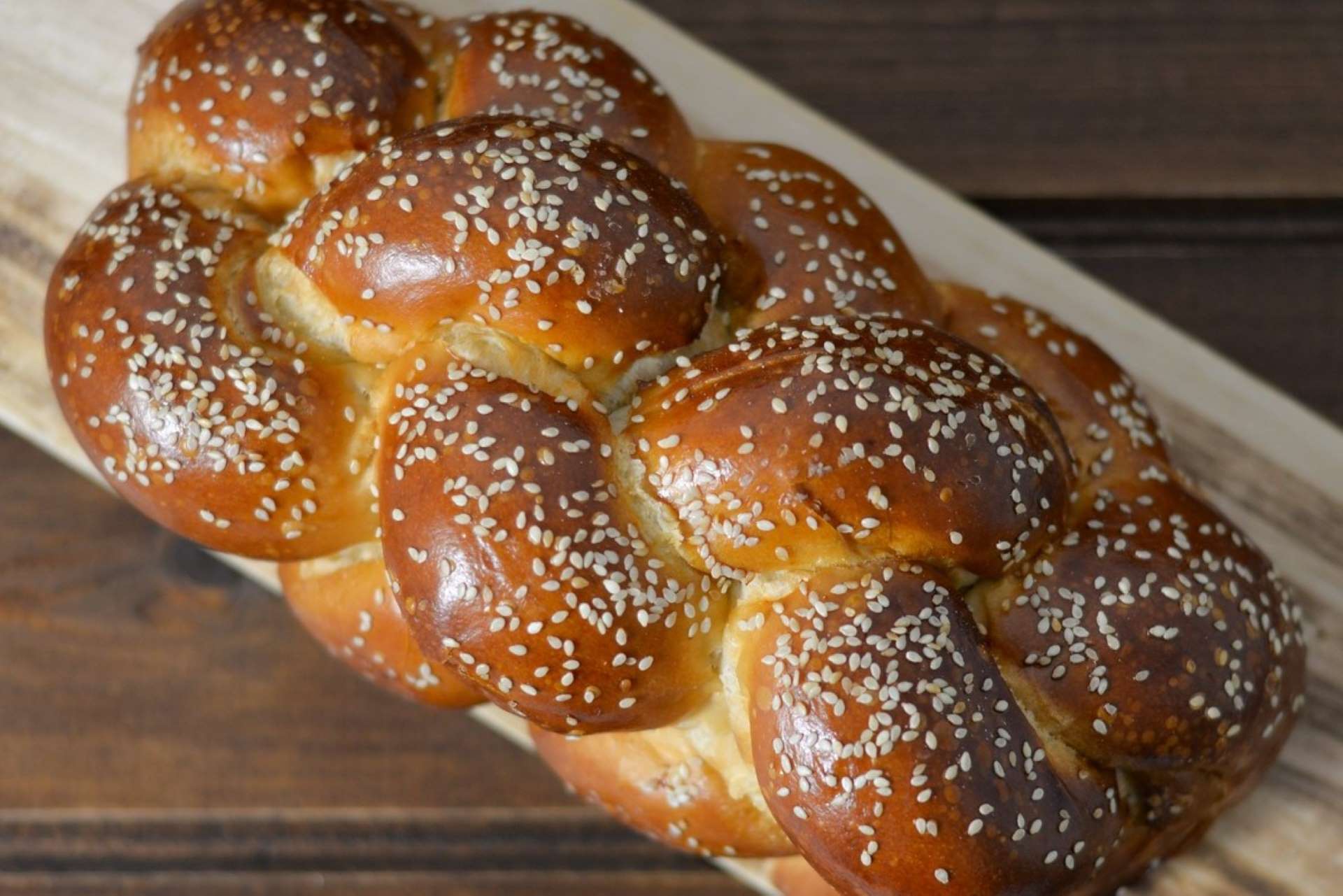Become the Hostess With The Mostest


Like many traditions today, the foods eaten during the 8 days and nights of Hanukkah are rooted in history.
From the well-known latke to the lesser known but oh-so delicious sufganiyot, each of these dishes eaten during the Festival of Lights has an important role to play in the celebrations.
Below, we’ve rounded up 6 traditional-ish recipes that pay homage to these foods, with a little bit of history mixed in.
Check ‘em out below.
Hungry for more? Explore our recipe library for ideas & inspo for your next gathering.
If you’ve ever wondered why latkes are synonymous with Hanukkah, here’s the scoop:
Hanukkah, if you didn’t already know, is a celebration of the 8 nights in which the menorah in the ransacked Second Temple of Jerusalem stayed lit, when it was only supposed to have enough oil for one.
To commemorate this, Jewish people around the world eat foods fried in oil, like latkes, during Hanukkah. Pretty cool, huh?
During the chilly winter months, few things sound as comforting and scrumptious as noodle casseroles. They’re rich, hearty and usually packed with soul-satisfying amounts of dairy.
And while kugel can be (and is) enjoyed year-round, it’s a staple during Hanukkah due to the delicious amount of dairy we mentioned above.
See, according to Jewish tradition, there is a story of a woman named Judith who helped save her village by feeding the opposing army’s general salty cheese, which in turn made him thirsty. To quench his thirst, Judith offered him wine… so much wine, in fact, that he passed out and she cut off his head with his own sword.
So, to honor Judith’s bravery, dairy- and cheese-packed dishes like kugel are enjoyed in abundance!
If you’ve ever cooked brisket, you know that low-and-slow is the only way to do it.
Despite the long cooking time, this large, oft tough cut of meat is a table staple for many Jewish holidays, including Hanukkah. And for a few good reasons:
In the early part of the 20th century, brisket became a popular cut of meat among Jewish immigrants due to its relatively low price tag compared to other more impressive cuts of beef. So, it was a great option for large family gatherings.
In fact, Ashkenazi butchers in Texas were some of the first to smoke their brisket in order to preserve it until they could find a willing buyer.
There are several requirements for meat to be considered kosher. Here’s a few:
Brisket—a cut of beef that comes from the sternum of a cow—checks all of these boxes.
Like we said above, low-and-slow is the way to go, which makes it a prime choice for holidays. Whether it’s left to rest on a smoker all day or tossed into a crockpot and left to braise for hours, it’s relatively fuss-free.
If you’ve never had the pleasure of enjoying the buttery, cheesy sweetness of rugelach, this is your sign.
Rugelach is a cream cheese and jam-filled pastry that is a staple for Jewish holidays, and especially Hanukkah, as it pays homage to Judith and her heroism. This vegan version—made with vegan butter and vegan cream cheese—is a delicious twist on a classic.
Here’s how the recipe’s creator, Megan Horowitch of ShortGirlTallOrder, explains it:
“Rugelach is a crescent-shaped Jewish pastry made with rolling dough around a sweet filling. It is traditionally made of a buttery cream cheese dough filled with nuts, dried fruit, chocolate, or cinnamon sugar and is a staple on Jewish Holidays such as Hannukah and Rosh Hashanah.
This vegan version is a twist on the classic that is made with a dairy-free cinnamon cream cheese dough filled with layers of orange marmalade and crushed pistachios. It has the same classic shape as the rugelach you know and love, but with the delicious flavors of cinnamon, orange, and pistachio baked throughout. It is truly the perfect dessert to add to your Hanukkah festivities this year!”
Before it became known as the soft, yeasted bread with an airy crumb we know and love, “challah” was actually a term used to describe any bread that was sanctified.
The word “challah” originated in the Torah, in a tradition known as “separation of the challah” in which God instructed Moses to set aside a portion of each loaf as an offering to local Jewish priests.
This tradition is still practiced today, but now, home bakers and professional bakeries will typically take a piece of dough and incinerate in the oven before baking the rest of the loaf.
And while the term “challah” is more widely used to describe any bread used in Jewish rituals, like the Shabbat dinner, the most common shape (braided to form 12 humps) is still used to symbolize the 12 loaves kept in the Temple in Jerusalem for the 12 tribes of Israel.
Remember how we mentioned the tradition of eating foods fried in oil to commemorate the oil in the menorah staying lit for 8 nights?
Well, that same sentiment applies to these cream-filled, deep-fried pillows of deliciousness.
According to the Atlanta Jewish Times, the earliest mention of these fried pastries dates back to the 12th century, and the writings of Rabbi Maimon ben Yosef: “One must not make light of the custom of eating sofganim [fried fritters] on Chanukah… It is a custom of the Kadmonim [the ancient ones].”
The fritters he mentioned were likely flat, like a pancake, and coated with a sweet syrup. But this modern version, with its nutty, creamy fillings, is a delicious substitute.
Get the Sufganiyot: Pistachio Cream and Peanut Butter Cream recipe!
Hungry for more? Explore our recipe library for ideas & inspo for your next gathering.
Join The Conversation